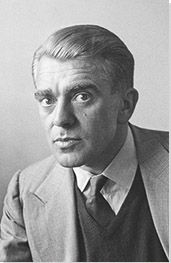Summary of Horst P. Horst
Horst P. Horst was a pioneer of fashion and portrait photography and a key figure in the development of 20th century photography as a whole. His sixty-year career was as varied as it was innovative and during his working life, he produced more than 90 covers for Vogue as well as hundreds, if not, thousands of magazine images. He is best known for his elegant, glamorous photographs of couture clothing in the 1930s, but he also led the way in using color photography, as well as developing the fields of documentary travel photography and, later, celebrity lifestyle photography. Horst was a master of light and composition and he seamlessly combined fashion photography with art and high society throughout his images, capturing and reflecting the time period in which he was operating.
Accomplishments
- Deep atmospheric shadows are a hallmark of much of Horst's fashion photography and portraiture. He avoided lighting images from above, instead choosing to highlight certain features or details with spotlights placed off to the side or beneath the subject. This created a sense of drama and sometimes, mystery, in his work.
- Horst assimilated styles and influences from art and history, combining these to reflect wider social and fashionable change in his images. For instance, the use of classical props and a focus on form in his early photos reflect the neoclassical pleats, drapery and bias cuts of courturiers such as Madeleine Vionnet and Jeanne Lanvin. In contrast, in his images of the late 1930s and early 1940s, he assimilated ideas from the Surrealist movement, incorporating fantasy backdrops, out of place objects, mysterious tableaux and eroticized and disembodied female forms into his work.
- Working with his partner, Valentine Lawford, in the 1960s and 1970s, Horst reinvigorated and popularized lifestyle photography, creating the behind-the-scenes style of image that we still see today. Through these photographs, he recorded the design and fashion revolutions of the period alongside cataloguing changing social norms and the decline of aristocratic wealth.
Important Art by Horst P. Horst
Mainbocher Corset
Mainbocher Corset is one of Horst's most iconic and celebrated images, as well as one of the most recognizable fashion photographs of the 20th century. It depicts model, Madame Bernon, wearing a back-lacing corset of pink satin made for fashion designer Main Rousseau Bocher's Autumn/Winter 1939 collection. Taken in the Summer 1939, the image wasn't published in French Vogue until December of that year. The photograph oozes sexuality and eroticism, with the corset worn over bare skin, which would not be the case for normal wear. The way the corset gapes around the bust on the model's left-hand side hints at the nudity beneath and makes it more provocative. This looseness was edited out when the image was printed in Vogue as it was considered too risqué.
The dramatic lighting and dark shadows give the image a sculptural elegance which is seen throughout much of Horst's 1930s work. Looking back at the photograph years later, Horst said that the "lighting is more complex than one thinks. There appears to be only one source of light. But there were actually reflectors and other spotlights. I really don't know how I did it. I would not be able to repeat it." Horst had a passion for art history and the angle and forms of the image can be seen to reference classical statues and other historical nudes such as the Rokeby Venus by Velazquez (1647) as well as more contemporary works including Man Ray's Le Violon d'Ingres (1924).
The image represented the end of an era for both Paris and for Horst. It was taken in the small hours on the night before Horst left Paris for New York, fleeing from the impending conflict of World War II. The image marks the end of Horst's Parisian career, as well the end of the French couture houses as the center of the fashionable world. As Horst remembered, "I had to take the train to go on to the boat around eight o'clock or something, you know, I was all packed up to leave Paris. And suddenly he brought in this corset. And I was very sad, you know, going--leaving Paris and you feeling the war's gonna come. And there was a leftover shelf and all that, and I said, "Put the girl up there." And we talked about leaving, and the girl was crying and all that. And then I undid her corset a little bit with the strings out. And that's the picture, you know, 'cause it was a farewell to France."
American Vogue Cover
Between January 1939 and September 1942, Horst produced 34 covers for American Vogue many of which featured red, white, and blue color schemes, reflecting the growth in patriotic sentiment that resulted from the ongoing World War. This image appeared on the cover of American Vogue in July 1939 and on British Vogue in August of the same year, the relevance of the color scheme being equally applicable for both countries.
Whilst still carefully set up, this image of model Muriel Maxwell putting on lipstick is less formally composed than previous images and demonstrates a move away from the classical black and white arrangements of many of Horst's Paris photos. Writing in the Vogue publication A Treasury of Color Photography by The Staff Photographers in 1951, Horst mused that "I used to be interested in dark subjects, with sharp, brilliantly-lit accents...More recently, I have, tried, in my color photographs, to make pictures in which every color shows distinctly, keeping the entire picture as light and clear and transparent as possible".
Bold, bright, and positive, the photograph features iconic sunglasses by Lugene and bag by Paul Flato, with the red stripes of the bag mirroring the red color of the lipstick and turban. During the War, women were encouraged to maintain a glamorous appearance, even in difficult conditions, with the idea that it would help keep morale up. This was particularly true in the UK, where rationing was becoming increasingly strict and the notion that "Beauty is your Duty" became a popular maxim. Through this, red lips became a symbol of wartime defiance and Horst's photograph reflects and reinforces this idea, with the scarlet lips and lipstick as the focus of the image.
Marlene Dietrich
In the lead-up up to World War II, the escapism offered by cinema became increasingly popular and taking portraits of celebrity actors and actresses was a staple of Horst's Vogue assignments. Marlene Dietrich had shot to fame in the 1930s with films such as Blonde Venus and The Devil is a Woman and was already an established star by the time Horst photographed her in 1942. Originally German, Dietrich had become an American citizen in 1939 and she spent the war raising war bonds and performing at U.S. Army camps across the globe. This series of photographs were taken in a short break between tours.
During the shoot, Dietrich told Horst to "remember the von Sternberg lighting," referring to Josef von Sternberg, whose specific lighting in films such as The Blue Angel helped make her famous. Horst, however, chose to ignore her and lit her portraits using his own distinctive style and placement of lights, creating a softer and more flawless effect. He noted that: "photographing live faces with a strong overhead light brought out the wrinkles, left the eyes dark, and made shadows under the lips and nose. To show a face at its best and most attractive, I tried lighting it from below or from the side, or sometimes straight on with just the eyes and cheek lit up! Horst didn't just focus on the lighting, however, he also felt it important to capture the personality of his sitters, saying that, "when you take portraits of people, you know, you have to find out who they are and how they live but you have to feel it and understand it, each one are so completely different to the other and that's what I find interesting".
The images Horst created showcased Dietrich's beauty and star quality, whilst also hinting at a dangerous and enticing sexuality and this was reinforced by the associated text. Variants of this image appeared in American Vogue in July 1942 with the caption "Marlene Dietrich - Between movies she tours the Army camps, sings her smouldering songs for the U.S.O...A coiled siren in a slinky white skirt and beige sequin tunic. A coiled siren singing her new song 'The Man's in the Army'. This is how the soldiers like her. This is how the movie public like her."
Male Nude
This nude is one of a series produced by Horst in the early 1950s and depicts a young man leaning backwards in an athletic pose, arms above his head, his one raised knee becoming the central focus of the image, both disguising and drawing attention to his groin area. Each photograph in the series features an anonymous man in a pose that accentuates the shape and form of his body and this is further enhanced by focused lighting that creates areas of highlight and deep shadow. The final effect is one of minimalism, the bodies are rendered in clear, simplified lines and the skin becomes as smooth as marble, likening the nudes to art pieces. Horst invites the viewer to appreciate the beauty of the male body in the same reverent way that one would view a classical nude.
Although an open secret in the fashionable and artistic circles in which he moved, Horst's homosexuality could not be publicly discussed until many years later. In this period, any allegations could have the potential to ruin his career, particularly during the ongoing period of McCarthyism when these were taken. In presenting his nudes as art, Horst safely distanced himself from any difficult social context. As art historian Oliver Winchester writes: "The most significant aspect of Horst's suite of nudes is the way in which they deftly apply the foil of asocial commercial fashion photography to the socially charged arena of the male body. This is the use of allusion through its absence, crafted seemingly by technical means alone."
Andrea Johnson, dress by Pierre Balmain, background by Marcel Vertés
From 1936 Horst incorporated Surrealist imagery into many of his photographs, mixing fashion, art, and fantasy. In the mid-1930s, the Surrealist movement was beginning to garner wider attention with artistic references appearing in advertising and film. Horst's use of modern art in his shoots helped this process of dissemination and he introduced radical art to new audiences, helping to normalize it. As the New York Times noted in 1996, "Horst tamed the avant-garde to serve fashion".
Horst's interest in Surrealism was, in part, inspired by his personal connections with artists such as Salvador Dali, Man Ray, and Surrealist fashion designer, Elsa Schiaparelli. These associations were more than social, however, Horst worked professionally with Dali, photographing his costumes for the ballet, Bacchanale in 1939 as well as his designs for the Dream of Venus pavilion at the New York World Fair of the same year. He also captured iconic portraits of Schiaparelli in 1936 and Dali in 1943.
Horst's use of Surrealist imagery and his enthusiasm for collaborating with artists continued throughout his career and is seen here in a series of images produced for American Vogue in the early-1950s. The backgrounds were designed by Marcel Vertés, a French illustrator and costume designer who came to prominence after winning two Academy Awards for his work on the film Moulin Rouge (1952). The image includes a number of Surrealist tropes particularly the oddly-shaped mannequin with the face obscured by a hat. This can be seen to references the distorted human forms appearing in the paintings of artists such as Dali and Max Ernst as well as the figures found in the work of Rene Magritte, with their faces obscured by everyday objects or shrouded in fabric.
The juxtaposition of the two-dimensional, non-realistic painted props with the colorful figure of the model further dilutes the reality of the piece. This debt to the Surrealist movement is acknowledged in the caption: "A dress of poppy cotton organdie puffing wide over a taffeta underskirt...The setting: The studio of a mythical and most contrariwise painter - out of a surrealistic still-life, he creates a portrait of alive and classic beauty".
Around That Time - Pauline de Rothschild
This image of Baroness Pauline de Rothschild's bedroom was photographed for American Vogue in the late-1960s and was published in a spread entitled "Le Style Pauline". It bore the caption, "As she enters her Paris bedroom, the baroness exults in a glorious indoor 'garden' conjured from luminous eighteenth-century Chinese wallpaper painted green. She designed the steel-and-brass bed and tented it with an extravagant taffeta baldachin. A green-and-white taffeta stripe covers Louis XVI chairs. A dressing mirror of Tula metalwork rests on the floor."
By 1969, Horst had photographed the homes of many wealthy, aristocratic families as well as celebrities such as Truman Capote and Gloria Steinem for Vogue and the series remained popular. As Vogue Editor, Diana Vreeland, wrote in the foreward to Vogue's Book of Houses, Gardens, People (1968), a collection of Horst's photos accompanied by essays by Horst's partner, Valentine Lawford, "Few things, are more fascinating than the opportunity to see how other people live during their private hours - in the rooms they love, in the gardens they have planted, among their personal possessions, pursuing their favourite interests, enjoying their special comforts, organising their domestic arrangements to fit the pattern of their individual lives."
Pauline de Rothschild was one of Horst's favorite subjects and he photographed her and her homes on a number of occasions. This image features a range of the themes that reoccurred in his lifestyle photographs, most particularly the idea of the home as a stage set. Here, the Baroness is seen entering into her brightly lit bedroom, as if from the wings of a theatre. The photograph also juxtaposes the old and new; the two-hundred-year-old chairs are shown alongside the contemporary metal bed frame. The historic, but faded and marked wallpaper lends a fragility to the image and hints at the decline of the traditional, aristocratic world that she inhabits and the gradual breakdown of hierarchal class distinctions. As Horst himself noted; ''my best pictures always have a little mess - a dirty ashtray, something".
Round the Clock
This image, alongside others by Horst, were commissioned for a controversial advertising campaign by Round the Clock hosiery, released in 1988. Each advertisement featured a revealing black and white photograph of a woman's legs, clad in the brand's hosiery with the caption "panty hose for men". The power of the hosiery to induce desire in the opposite sex was reinforced by both the inclusion of bare buttocks or skimpy underwear in each image. The accompanying television advertisement suggested a man was using the print image as a masturbatory aid.
The style of the shots are reminiscent of Horst's 1930s fashion photographs, with the use of dark shadows and bright highlights, with light sources coming from the side, rather than above. There are also references to his early interest in Surrealism with the use of cropped and disembodied figures, with the legs in this image, seeming to be torso-less, emerging only from the wide net petticoat. The campaign was devised by the marketing agency Romann & Tannenholz whose research had revealed that 85% of women's hosiery purchases were influenced by how they looked to men. Unsurprisingly, the campaign drew fierce criticism for its sexism and objectification of women but it was also very successful, raising brand awareness by 30%. Horst's reputation and lengthy career lent the campaign much needed respectability, and this was acknowledged by Gad Romann, chairman of the marketing agency, who defended the images, stating that "there's a difference between pornography and art; using Horst makes it art".
Biography of Horst P. Horst
Childhood
Born Horst Paul Albert Bohrmann, Horst was the second son of middle-class merchant, Max Bohrmann and his wife, Klara Schoenbrodt. As a teenager, Horst spent a year in a Swiss sanitorium after displaying symptoms of tuberculosis. Bored and alone, he used his time to read about the progressive teachings of the Bauhaus, a German art and design school. He also corresponded with Eva Weidemann, a student, studying dance at the school. This period sparked Horst's lifelong interest in avant-garde art and architecture. Keen to learn more, in 1926, Horst started architectural training at Hamburg's Kunstgewerbeschule where he studied design with Walter Gropius, the founder of the Bauhaus.
Early Training and Development
Horst moved to Paris in 1930 to work as an apprentice for modernist architect Le Corbusier, but once in Paris, he met George Hoyningen-Huene, a photographer at French Vogue who introduced him to the world of fashion photography. Horst began to work as Huene's photographic assistant, learning "everything he could teach me about photography". The two became lovers and traveled to London together, where Horst met Cecil Beaton.
Now wanting to pursue a career as a photographer, Horst's break came in 1931, when "A friend of mine asked me to lunch and there was an art director from American Vogue called Dr Agha and he said well you ought to try photography...He said, you go to the studio you can have it twice a week for three hours and there's an assistant, try and take a photograph. I thought alright, and I did the photograph which they published."
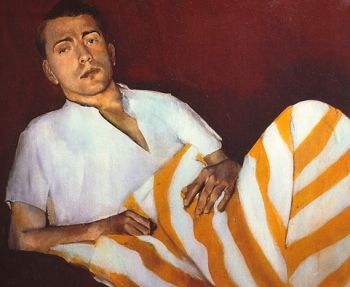
Horst continued to work with Huene, from whom he learnt an enormous amount, taking on board his approach to photography and combining it with new ideas. As Horst noted, "unlike Huene, who had absorbed an infallible sense of elegance from his upbringing, I had to invent it on my own: more exactly, to learn gradually to recognize elegance in others and try to portray it in my photographs" Huene also introduced Horst to Paris society and they socialized with a wealthy set of artists, designers and patrons, remembering this time, Horst said: "you went to Chanel's for dinner and you never knew whether it was Dalí or Picasso or whoever, you know, all mixed up, it was very cosy, very nice, very simple".
By the mid-1930s Horst had eclipsed his mentor, who left to work for rival magazine Harper's Bazaar. Horst's images were regularly featured in French Vogue as well as in the British and American editions of the magazine. Although he initially drew influence from classical sculpture in the Louvre, during this time he was increasingly influenced by Surrealists such as Man Ray and Salvador Dalí, incorporating their ideas into his work. The 1930s also saw the increasing availability of color photography and Horst was quick to embrace these technological advances, producing iconic Vogue covers. This willingness to trial new techniques and ideas, played a significant role in his popularity at Vogue.
Mature Period
In August 1939, on the eve of World War II, Horst fled Paris for New York where he took up a role with Conde Nast, producing images for Vogue and Vanity Fair and working out of their Manhattan studio. The War was a catalyst for change in the fashion industry as dresses ceased to be imported into the United States from Paris. This allowed the American fashion industry to grow and flourish and this change in the market was reflected in an alteration in fashion photography, images became more informal and less posed and Horst's 1940s work follows this trend.
When the United States joined the fighting at the end of 1941, Horst was deemed an alien and had to surrender his camera equipment to the Vogue offices for safekeeping until the situation was resolved. It is a testament to his reputation and the support he received from powerful allies in the industry that he was allowed to continue to work until he officially became an American citizen in 1943. At this time, he changed his name from Bohrmann to Horst to avoid confusion with the Nazi official Martin Bormann.
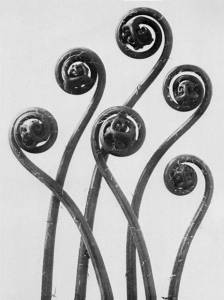
Horst was called up for U.S. army service in July 1943, undergoing three months of training at Fort Belvoir in Virginia. Recalling this time, Horst said that, "The first few days or weeks in the army were pretty rough, you didn't know anybody, didn't know anything about the army, didn't know anything, you know. Then, I started to love Americans because on the first twenty-mile march, at night...I was about the oldest soldier there, 35 years old, I think, and I hardly could make it and the boy next to me took all my equipment and helped me". Horst found army life tedious and after a few months of service, Editor-in-Chief of Vogue, Edna Woolman Chase, intervened to find Horst an assignment where his skills were put to better use. As a result, he became a photographer for two army magazines, Yank and Outfit. During the course of his duties, he photographed President Truman and General Eisenhower and through these connections, he was later invited to photograph Eisenhower's wife when she became the First Lady. After the war Horst returned to fashion work with Conde Nast, continuing to shoot couture images as well as photographing new lines produced by the burgeoning ready-to-wear industry in the United States.
In 1946 Horst produced a book, Patterns from Nature, which featured close-up, black and white images of plants, rocks, and shells. This was a personal project and was inspired by the plant photography of Karl Blossfeldt, along with the wider New Objectivity movement of the 1920s and 30s. New Vision Photography was a German movement which sought to move away from Expressionism and Pictorialism and, instead, advocated for sharply-focused documentary-style photography. Whilst a departure from his usual subjects, the images displayed the same skill with lighting that are apparent in his studio photographs and reflect Horst's earlier interest in the teachings of the Bauhaus, where New Vision photography was popularized by Moholy-Nagy.
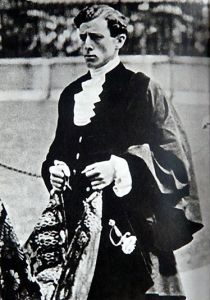
In 1947 Horst bought five acres of land in Oyster Bay Cove, Long Island which was part of the estate owned by the famous designer, Louis Comfort Tiffany. Here, he built a house and garden to his own specifications. A year later, Horst began a relationship with the British diplomat, Valentine Lawford, that lasted until Lawford's death in 1991. In 1949, Horst and Lawford traveled to the Middle East (Lawford was political counsellor at the British embassy in Tehran at the time). On the way, Horst photographed parts of the ancient city of Persepolis, which had only recently been uncovered. Horst returned in the spring of 1950, visiting Lawford and then spending ten days documenting the annual migration of the Qashqa'i clan. Images from these trips were published as travel pieces in American Vogue. Later that year Lawford resigned from the Foreign Office and moved permanently to Long Island with Horst.
Late Period
In the winter of 1951-52, Horst traveled to Europe, shooting a campaign for Modess, a brand of sanitary napkins and covering the February Paris collection for Vogue. He took this opportunity to reconnect with his family living in East Berlin, who he had not seen since 1939. The distance from his family, perhaps, led Horst to create his own in Oyster Bay. He invited 18-year-old Austrian, Johann D. Mayr (known as Hans) to live with him and Lawford and work as his assistant, with Mayr later recalling that "Horst became like a second father to me, he treated me like family".
When Conde Nast closed their New York studio in 1952, Horst set up his own studio in the city on East 55th Street. The large windows in his new workspace led him to experiment more with natural lighting, doing away with his trademark shadows for a short time. During this period, the Vogue editor-in-chief changed and the implementation of new rules at the magazine alienated Horst, who began to focus his attention on advertising assignments and lifestyle photography instead. He also produced a series of images of male nudes with his characteristically dramatic lighting, which were exhibited in Paris in 1953.
In 1962 Diana Vreeland became editor of Vogue, employing Horst and Lawford for the Fashions in Living pages. Horst took images of the houses of the rich and famous and Lawford wrote the associated text. This work continued throughout the 1960s and 70s, with Horst also working for House & Garden in a similar capacity. The magazine spreads that the pair created drew excellent reviews from their subjects, with Emilio Pucci writing that "I have been absolutely delighted with fantastic pictures published in Vogue... I really cannot tell you how impressed I am by your artistry and superb sense of movement and proportion which is so beautifully exemplified by these pictures".
Horst's aesthetic experienced a renaissance in 1978 when he was asked to photograph the Paris collections for French Vogue using the styles that he had used in the 1930s. This led to a revived interest in his work and precipitated numerous new books, exhibitions and documentaries. His failing eyesight caused him to stop working in 1992 and he died a few years later in 1999 at the age of 93.
The Legacy of Horst P. Horst
Whilst Horst's early fashion photography defined the golden-age of glamour in the 1930s, he also continued to embrace new aesthetics in his work, including the early adoption of color techniques and his documentary travel photography, popularizing and disseminating these ideas. ''He really was the 20th century,'' said the photographer Eric Boman, who met Horst in 1978, when they were both photographing the French fashion collections. In a similar vein, model, Carol Alt, who worked with Horst in the 1970s and 80, noted that "he put a little bit of himself into every picture. He was humble, very quiet, very kind. It was as if he didn't understand or couldn't connect to the fact that he held a major place in fashion history and photographic history". The music video for the song Vogue by Madonna, released in 1992 pays homage to Horst's signature style.
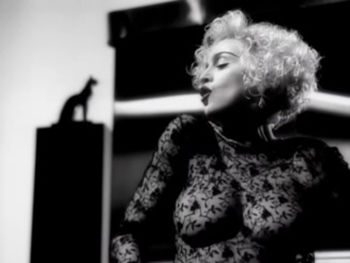
Horst's 1950s series of nudes were very influential in the work of photographers, Robert Mapplethorpe and Bruce Weber in the 1980s. Mapplethorpe adopted Horst's use of anonymous figures and stylized lighting, whilst Weber's images drew more on Horst's commercial style, presenting his nudes as art. These were also more sexually charged and were used in high-profile marketing campaigns for clients such as Calvin Klein and Ralph Lauren. Weber himself explained his debt to Horst, stating that Horst's pictures "took you to another place...it's like seeing someone from another world...and you wonder who that person is and really want to know that person and really want to fall in love with that person".
Influences and Connections

-
![Edward Steichen]() Edward Steichen
Edward Steichen -
![Cecil Beaton]() Cecil Beaton
Cecil Beaton -
![Irving Penn]() Irving Penn
Irving Penn - Karl Blossfeldt
-
![Salvador Dalí]() Salvador Dalí
Salvador Dalí - George Hoyningen-Huene
- Coco Chanel
- Elsa Schiaparelli
-
![Robert Mapplethorpe]() Robert Mapplethorpe
Robert Mapplethorpe -
![Richard Avedon]() Richard Avedon
Richard Avedon - Bruce Weber
- Eric Boman
Useful Resources on Horst P. Horst
- Around That Time: Horst at Home in Vogue (2016)Our PickBy Valentine Lawford and Ivan Shaw
- Horst: Photographer of Style (2014)Our PickEdited by Susanna Brown
- Horst: Patterns from Nature (2014)By Martin Barnes
- Horst Portraits: 60 Years of Style (2001)Edited by Terence Pepper
- Horst: Sixty Years of Photography (1995)By Martin Kazmaier
- Horst: His Work and His World (1984)By Valentine Lawfordc
 Ask The Art Story AI
Ask The Art Story AI